Wind Farm Test Equipment
TURBINES
Wind Turbine Components - Anemometers / Rotor Bearings / Generators
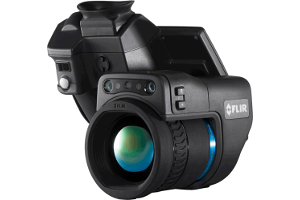
FLIR T1020 HD Thermal Camera - Wind Turbine Testing
Maintenance teams utilise thermography to check electrical connections
Features
Anemometers: are important for understanding wind speed and direction. They help optimise a wind turbine’s energy output. These devices can be mounted at different heights to gather accurate wind speed data. They send rotation data to a control center. This center positions the turbine into the wind for maximum efficiency.
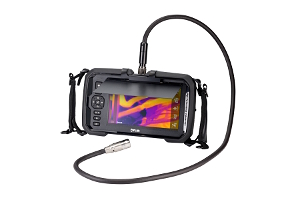
FLIR VS80-IR21 Videoscope Kit - Wind Turbine Testing
See into the cramped bearing casings
Features
Rotor Bearings: Wind turbine components are susceptible to wear and can break down, especially the rotor bearings: a series of bearings within the rotor shaft that connect the wind turbine blades to the gearbox. Ensuring proper operation is critical to maintaining operational efficiency and asset health. An IR videoscope probe allows you to see signs of overheating. A vibration meter or remote vibration monitoring system could detect signs of mechanical failure via vibration analysis.
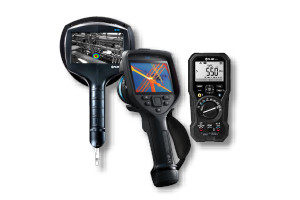
FLIR E96 Thermal Imager and IM75 Insulation/DMM - Verify the health of wind turbine mechanical and electrical components
FLIR Si124-PD Acoustic Imaging - Find problems before failure
Features
Wind Turbine’s Generator: takes output from the gearbox and produces electric power. These complex systems can include commutators, slip rings, coils, cooling systems, and more - all of which require regular inspection to ensure proper operation and asset health. Acoustic imager: inspects electrical systems to detect problems before breakdowns occur. Thermal cameras and digital multimeters: verify the health of mechanical and electrical components.
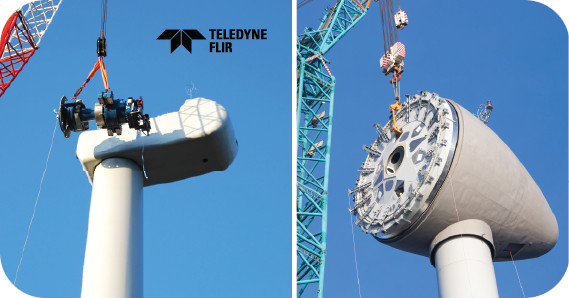
Wind Turbine Components - Pitch Control / Gearboxes / Gearbox Cooling Systems
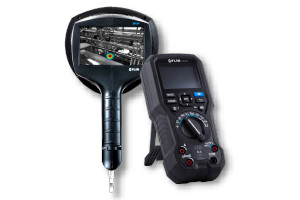
FLIR DM286 Industrial Multimeter - Check voltage levels and find electrical hot spots
FLIR Si2 Pro Acoustic Imaging - Find problems before failure
Features
Pitch control systems: control a blade’s angle, matching it to the direction of the wind in order to adjust speed of rotation, allowing optimal efficiency (this reduces mechanical load). The pitch control systems include VFDs ensuring a gradual start/stop preventing shock loads. The VFD, motors, and hydraulic components of this system should be checked frequently.
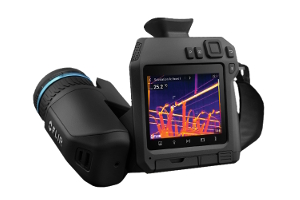
Essential to check temp. / condition of gearbox bearings, gears and components
Features
Gearbox: connects the rotor shaft to the power generator and increases the rotations per minute (RPMs) to optimise power generation. The gearbox must function efficiently in demanding weather conditions and under loads, vibrations, and temperatures that continuously change. Temperature and condition of bearings, gears and components is essential to operational efficiency and asset health.

Regular inspections of wind turbines with thermal cameras and DMMs help avoid failure/downtime
Features
Gearbox cooling systems: maintain a consistent temperature within the nacelle to ensure the life expectancy of all the components. The process of energy conversion along with solar radiation can generate heat that could damage the components. Regular inspections with a thermal camera, as well as electrical inspections with a digital multimeter, can provide several months of warning time before failure, avoiding costly downtime.

POWER UTILITY
Power Utility Maintenance - Pad-mount Transformers / MV Circuit Breakers

Find hot spots that indicate overheating parts or signs of electrical resistance and mechanical wear so you can begin repairs immediately
Features
If a transformer overheats and fails, it can lead to expensive repairs and potential power outages. Regular monitoring using advanced diagnostic thermal imaging cameras can help you easily inspect and monitor the temperature distribution on the outside surface of each transformer to catch impending failures before they occur.
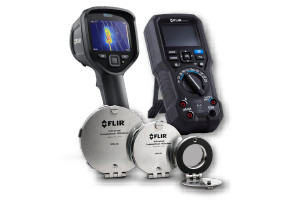
Frequent inspections: checking for loose or damaged connections
Features
Medium voltage (MV) circuit breakers connect the low voltage wind generated power through a step-up transformer to the bus of a high voltage/medium voltage substation and can be installed either above or below ground. While above-ground MV circuits are easier to access, they require frequent inspections with a thermal camera and test and measurement tools to ensure none of the connections are loose or damaged. Below-ground MV circuits are costlier to install but require less maintenance. Inspectors may need to check these breakers occasionally for splice failure or ground faults. The visual inspection of poles and mounting equipment is also need to ensure the collection system is in good working order.

Power Utility Maintenance - Substations / Transmission

Frequent inspections: checking for loose or damaged connections
Features
Substations contain the most typical equipment found at a wind farm, including transformers, breakers, switches, and relays. If any of these systems fail, the entire transformer will shut down, costing millions in added overtime pay for workers and expenses to expedite repairs. Regularly scheduled electrical inspections with thermal imaging cameras along with surveys for SF6 insulation leaks with a gas detection camera will ensure equipment keeps working and wind farm operators meet safety regulations governing their equipment. Most wind farms perform these tasks during the low-wind season to reduce their loss of generation and revenue.
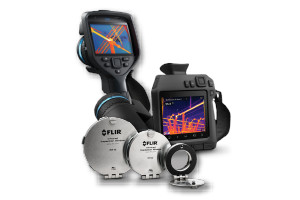
FLIR T1020 and T-Series (FlexView Dual FOV Lens) Thermal Imagers - Get the full picture of potential problems
FLIR Si2 Pro Acoustic Imaging - Find problems before failure
Features
Unplanned transmission line repairs can easily cost millions, so it’s important to regularly inspect every connection to ensure that they are in working order. Every system has a lot of small connections, often located high up out of reach. Connections get hot before they fail. Conducting regular surveys of substations and transmission lines using a thermal imaging camera can give you a full picture of potential problems. You can visualise partial discharge or measure the temperature of overheating connections and diagnose problems before outages occur - minimising the cost of repairs, maximising equipment life, and keeping the power on for customers.